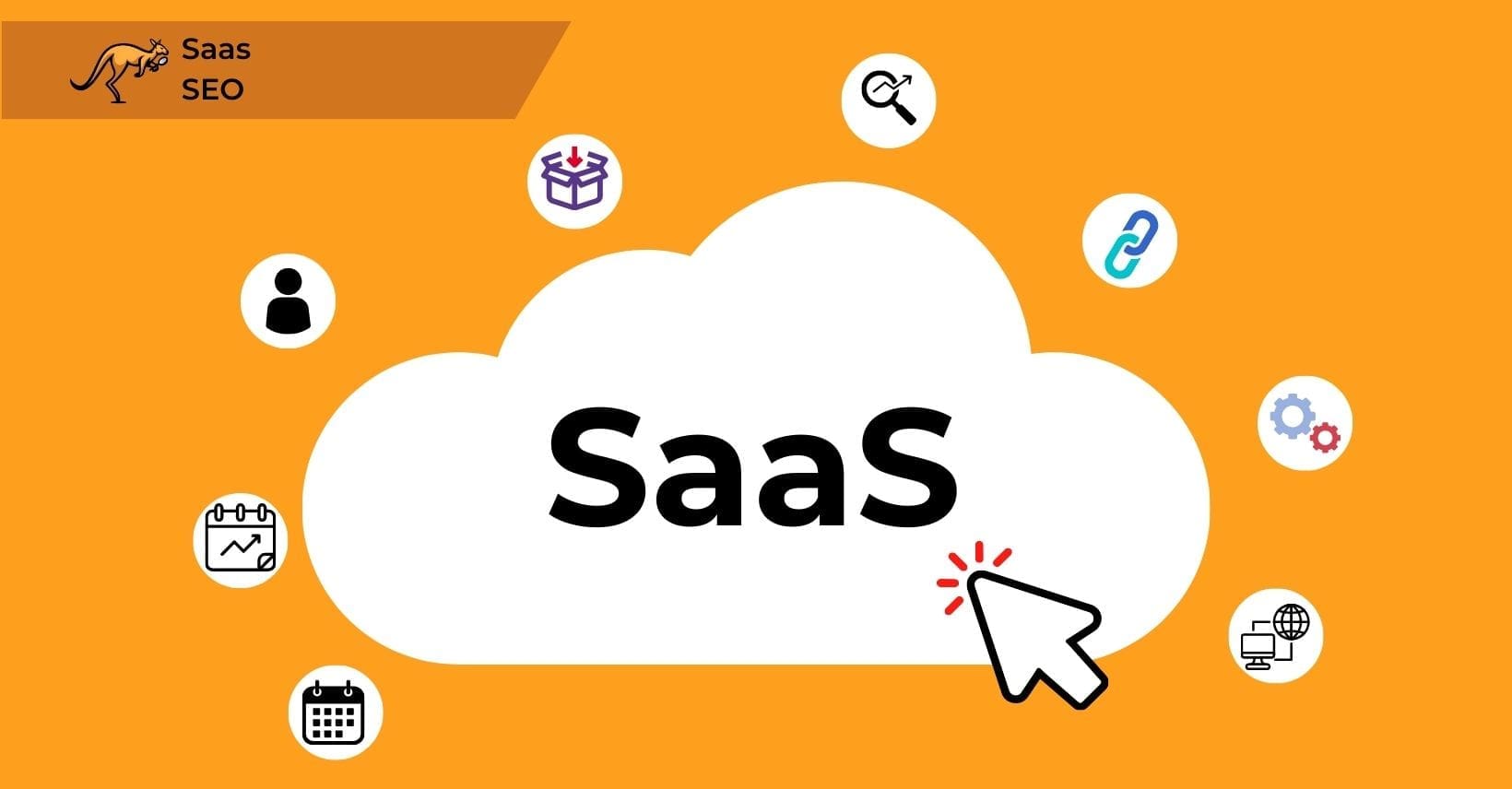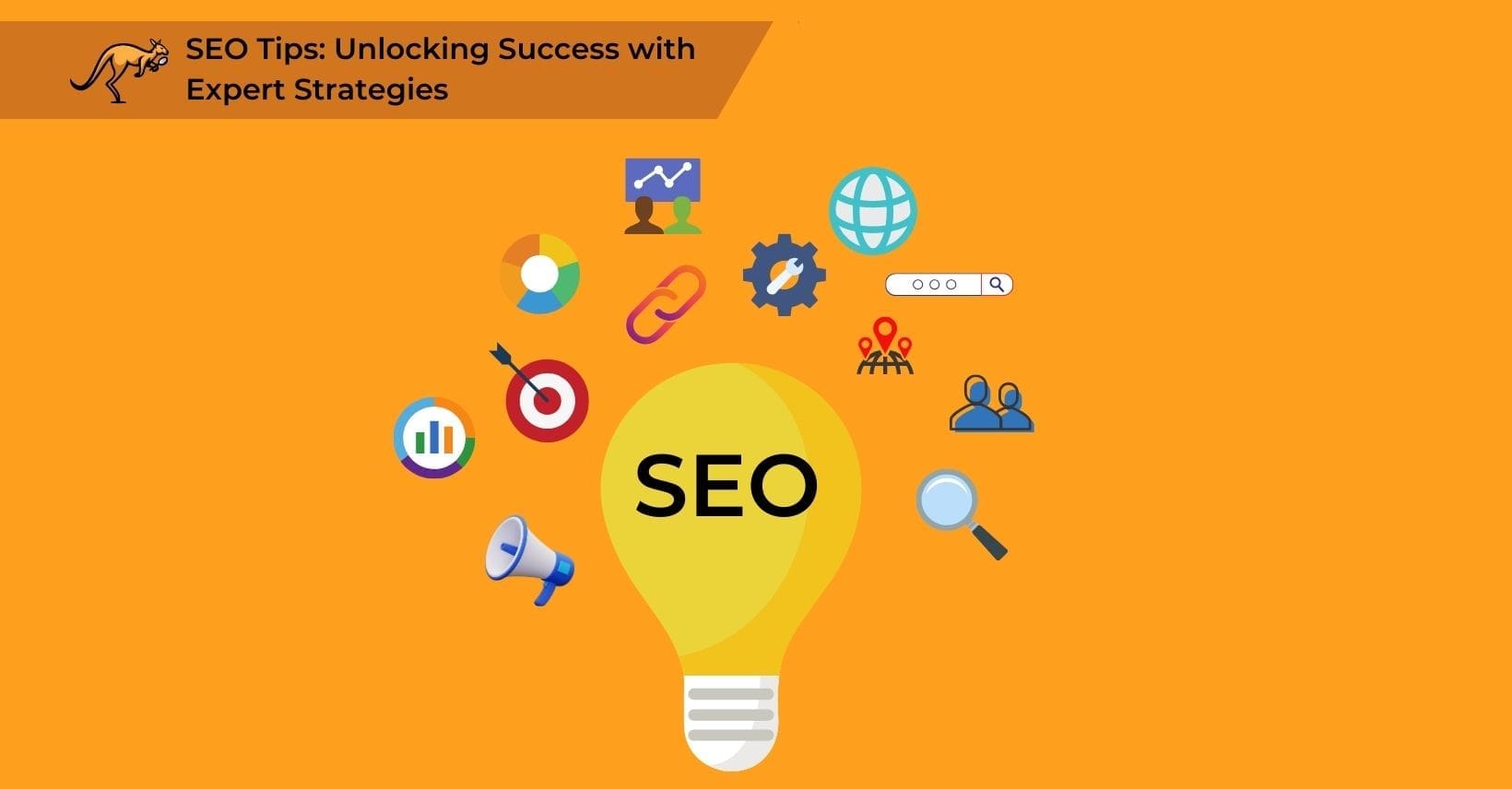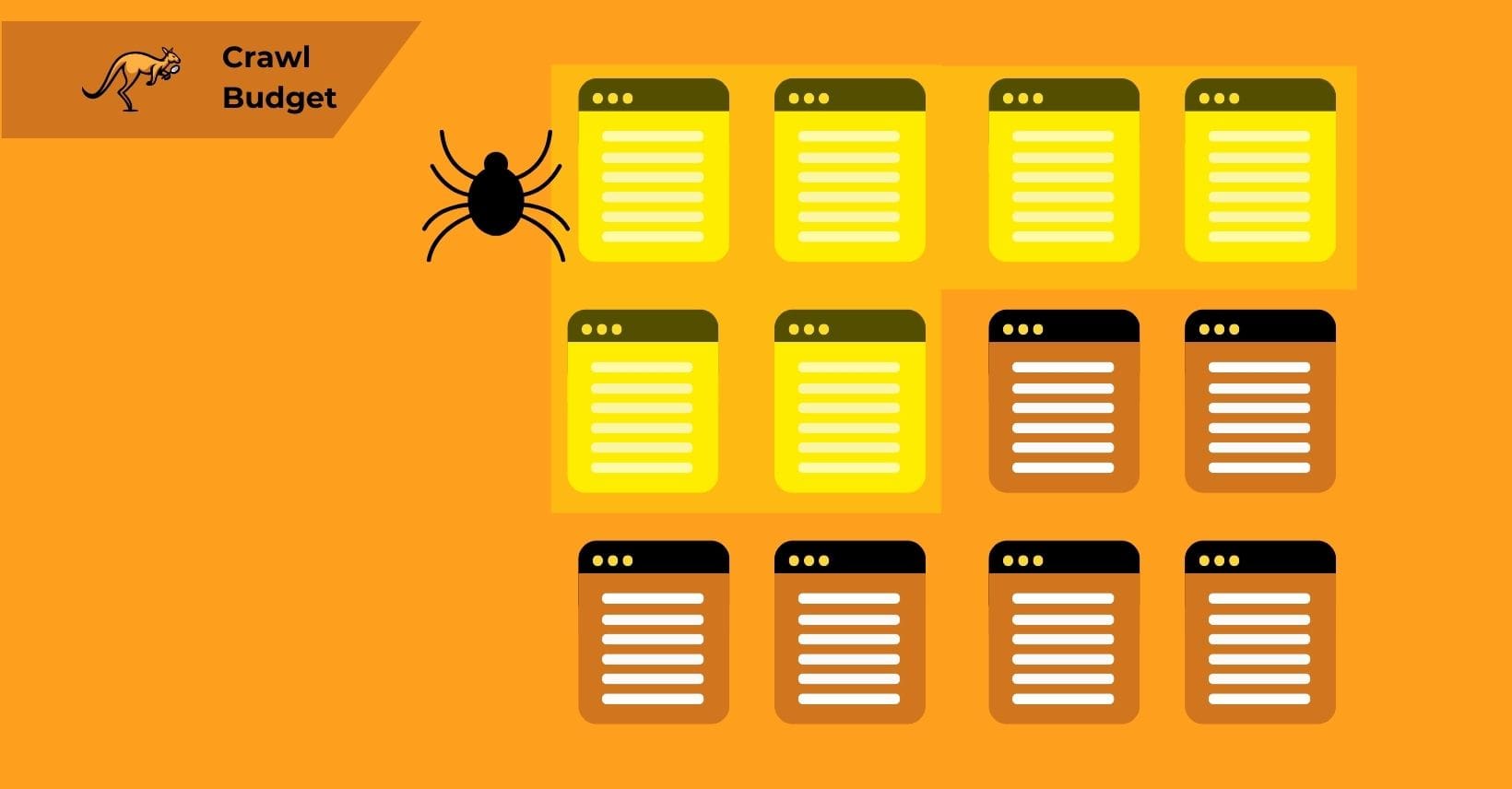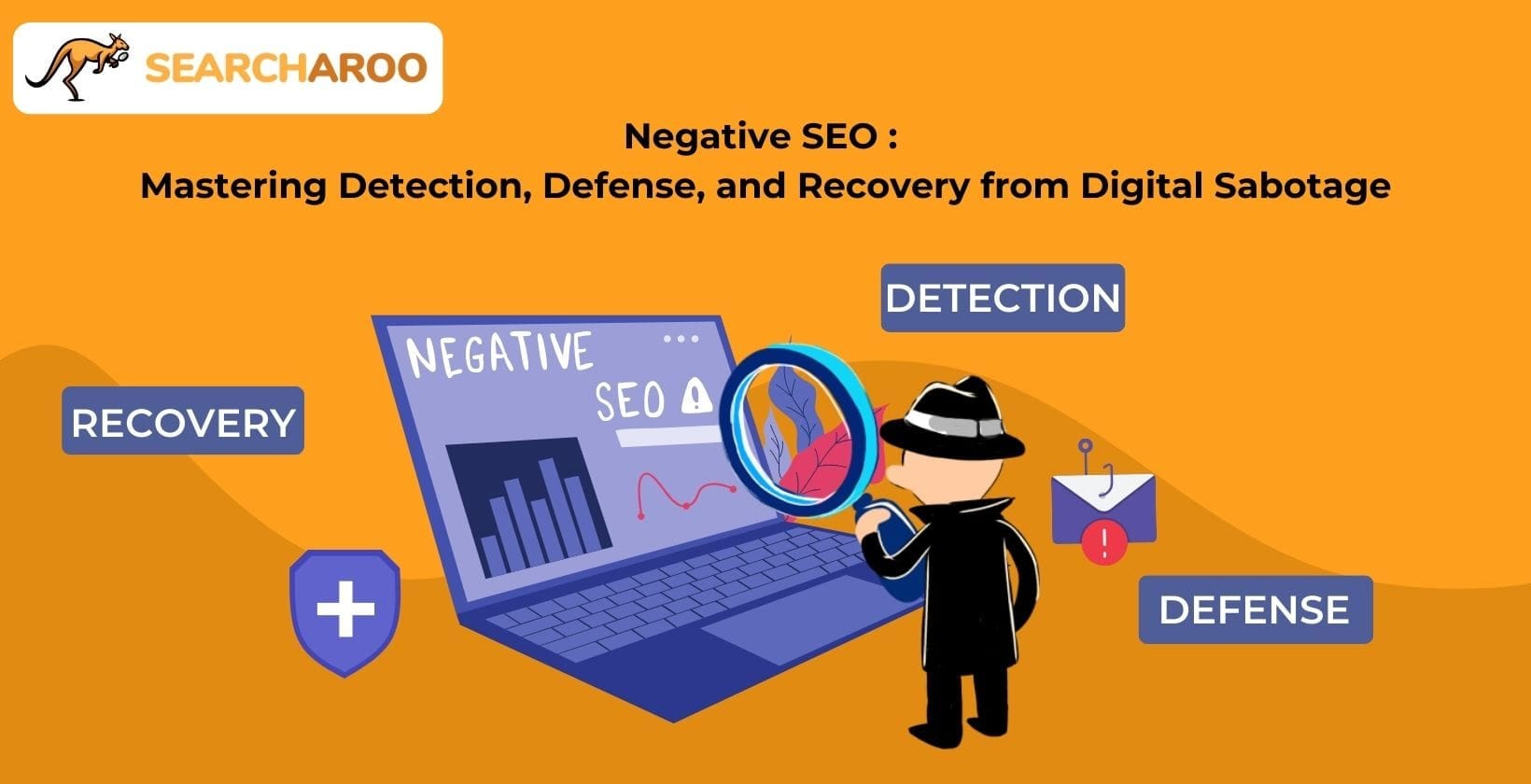Software as a Service (SaaS) is growing rapidly and dominating the market. With this rapid growth comes fierce competition.
To stand out, you must keep pace and surpass your rivals. How can this be achieved? By developing a solid SaaS SEO strategy.
A well-crafted strategy, created in-house or by a professional SaaS SEO service, is key to long-term growth and success in the SaaS sector, with improvements coming from implementing technical optimizations, developing high-quality content that answers user queries, building authoritative backlinks, and maintaining consistent performance tracking across all marketing channels.
Looking at the most successful SaaS companies, it’s clear their SEO strategy is a major factor in their success.
Knowing how to set up the right SaaS SEO plan, the areas to focus on, and finding opportunities to get your content in front of your target audience is crucial for attracting organic traffic to your website. This article will explain what SaaS SEO is, why it’s important, and how to improve your efforts.
As you enhance your strategy, remember there are specific elements within your control that can significantly boost your SEO performance.
What is SEO?
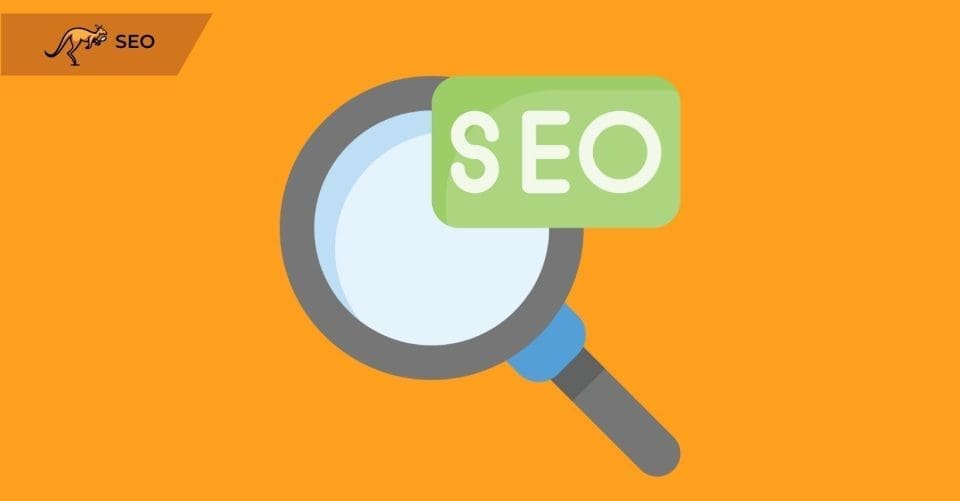
Let’s start with a quick introduction to SEO. SEO encompasses all efforts to improve your brand’s position on search engine results pages (SERPs).
The objective is to achieve high rankings for your landing pages, blog posts, and products. Higher rankings lead to increased traffic. Numerous factors influence each page’s ranking. Google uses an AI-enhanced algorithm to evaluate various elements of your site, from the content on your landing pages to the link-building strategies you implement.
The algorithm considers the following ranking factors, as well as several others. These are the most important ranking signals:
User Engagement
This term refers to how visitors to your website interact with your pages. That covers how long people spend on your website, how often people click on or interact with your content, and how frequently your pages are visited.
Link Profile
This relates to the structure of the links leading to and from your content. That means examining which websites and domains are linking to yours, the destinations of your external links, and how any internal links on your site are organized.
Content
The content of your onsite material refers to what it is about and how beneficial it is. That covers studying which keywords appear frequently in your website content and how your articles or blog posts match reader intent.
Domain Authority
Domain authority measures how relevant your website content is to your industry. Google highly values your company’s expertise, authority, and trustworthiness. To improve your domain authority, consider these questions: Is there a detailed about page on your site? Are your contact pages, references, and external links easily accessible? Does each blog post have an author byline?
Typically, link building boosts domain authority by sending link juice from other sites to yours. However, link building is a vast topic and beyond the scope of this guide. Let’s explore how these principles apply to different SEO strategies as we continue.
What is SAAS SEO?
SaaS SEO drives organic traffic to a SaaS (Software as a Service) company’s website by securing high rankings on search engine results pages (SERPs) for targeted keywords, which becomes essential for software companies facing intense competition in the rapidly growing SaaS market where online visibility directly impacts customer acquisition and revenue growth. This process involves technical SEO as a key part of an effective content marketing strategy to improve your position in Google search results, making your SaaS product more visible to potential customers. Higher rankings lead to more organic search visits, which means more customers.
Many SaaS companies also rely on performance marketing, like PPC, social ads, and affiliate marketing, to quickly acquire new clients. However, the costs of these methods are increasing, and solely depending on paid acquisition can be risky. Organic search traffic is crucial because it provides steady traffic even when paid advertising is reduced or stopped.
A robust SaaS SEO strategy is essential. It ensures continuous traffic and supports exponential organic growth. Many SaaS companies are increasing their SEO spending to diversify traffic sources and manage acquisition costs.
While there are differences between SaaS SEO and SEO for other industries, Google’s main ranking factors remain consistent across all sectors. For SaaS companies, an SEO strategy focused on creating high-quality content that answers users’ queries and naturally attracts backlinks is necessary, with the most effective approaches including keyword clustering, pillar content development, technical SEO optimization, and content marketing that addresses each stage of the buyer journey from awareness through consideration to decision.
Understanding how SEO influences SaaS websites today is becoming increasingly important, given the evolving digital landscape.
How Important is SEO for SaaS Websites in 2023?
SaaS SEO has evolved in recent years to emphasize user experience signals, content quality over quantity, and mobile-first indexing, with current best practices focusing on creating comprehensive content clusters around pillar topics, optimizing for voice search and featured snippets, implementing technical SEO fundamentals like Core Web Vitals, and developing omnichannel marketing strategies that complement organic search efforts. A recent survey shows that over two-thirds of online interactions start with an organic search. Yet, only 0.63% of users look beyond Google’s first results page.
Therefore, businesses must continue implementing SEO techniques. For SaaS companies, SEO is vital to stay relevant and competitive. A comprehensive SEO plan, including creating high-quality content, optimizing for relevant keywords, and acquiring backlinks, can significantly boost a website’s visibility and drive organic traffic. Keeping up with the latest algorithm updates and best practices is essential to maintaining an effective strategy.
Once you start seeing results, the benefits will grow with each new piece of content. To understand why your SaaS company needs a solid SEO strategy, it’s important to recognize how these efforts can set you apart from the competition and ensure long-term growth.
Why Does Your SaaS Company Need a Solid SEO Strategy?
The SaaS industry presents unique challenges and opportunities for dedicated webmasters, with SaaS SEO differing from other industries through its focus on digital service delivery rather than physical products, subscription-based business models requiring customer retention strategies, rapidly changing industry trends demanding dynamic content approaches, global competition necessitating international SEO tactics, and specialized targeting of business decision-makers rather than individual consumers. Careful consideration of SEO strategies is essential to maximizing your efforts when creating content for your site. But why are SEO strategies vital for SaaS businesses?
Let’s explore the specific factors impacting your SaaS website that highlight the importance of technical SEO.
Digital Service Delivery
In a SaaS model, your product is not something buyers can touch, feel, or pick up off the shelf. It is fully distributed and applied online.
Your online presence, which includes elements such as your website, social media platforms, and other digital touchpoints, should communicate the value of your service.
SEO is critical for increasing exposure, boosting organic traffic, and optimizing these digital platforms to express the correct message.
Subscription-Based Business Model
Subscriptions are key to the economic models of SaaS businesses. This means getting new clients is not enough; you must also retain them.
Long-term connections must be prioritized in SaaS SEO efforts, emphasizing creating helpful and relevant content that engages existing clients and keeps them coming back.
Trends in the Industry are Changing Rapidly
The SaaS market is characterized by rapid innovation and shifting trends. As a result, SEO for SaaS must be dynamic, concentrating on industry changes, regular algorithm adjustments, and changing client preferences.
Global Focus
Unlike brick-and-mortar companies with physical goods, which compete with local or regional counterparts, SaaS enterprises frequently have global direct competition.
This means anyone running a SaaS business needs a global SEO approach considering diverse languages, cultures, and search patterns. It also means optimizing your website for search engines other than Google.
Targeting Decision-Makers
Often, a team or company subscribes to a SaaS product rather than an individual. SEO for SaaS should consider this, focusing on keywords, content, and messaging that appeal to these decision-makers.
SEO should also guarantee that your website ranks highly for the phrases these important stakeholders will likely look up.
Identifying Diverse Customer Profiles
Companies target different customer groups based on the nature of their SaaS products. These groups could be individual consumers (B2C), other businesses (B2B), or businesses that serve both consumers and other businesses (B2B2C). Each group has distinct search habits, pain points, and preferences.
Your SaaS SEO strategy must be customized with the right keywords, content types, and engagement methods to reach and convert these target groups. Mastering these aspects is crucial for online success in this competitive market. Once you understand your audience, the next step is to develop a strong foundation for your SEO efforts.
How to Build a SaaS SEO Strategy That Works
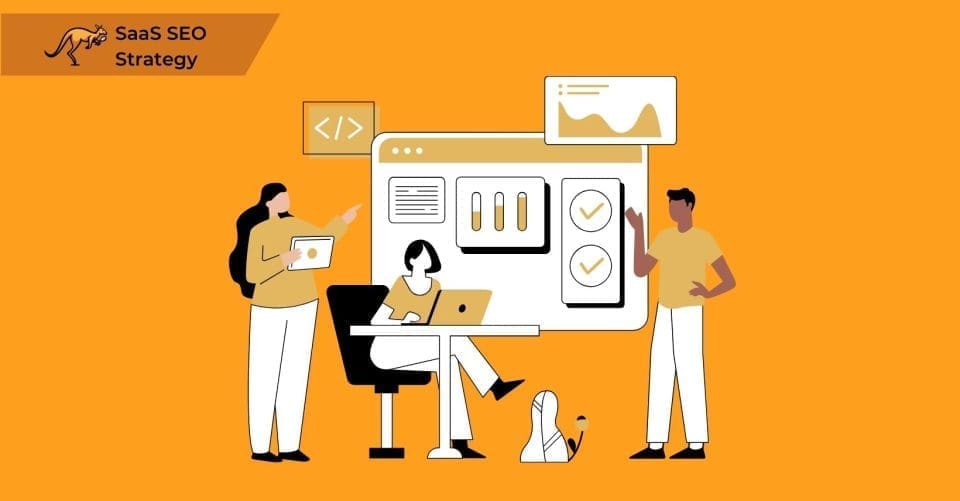
A successful SEO strategy for SaaS businesses in 2024 requires detailed planning, including defining the approach, scope, and content schedule, which drives results when you follow the eight-step process of conducting discovery sessions, performing keyword research, prioritizing target keywords, mapping content to buyer journey stages, identifying ranking opportunities, structuring content into search clusters, analyzing keyword gaps, and executing the strategy with consistent measurement and refinement.
By following this updated SaaS SEO guide, you can develop a top-notch SEO strategy for your SaaS firm, ensuring long-term website traffic and sustainable business growth both now and in the future.
Step 1: Plan a SaaS SEO Discovery Session
The first stage in developing your SEO strategy is identifying your brand’s mission, what you provide as a SaaS firm, and what searchable phrases you want to appear for. This comprises both internal and industry data, as well as external aspects such as customer behavior.
Keyword Research
Begin the session by answering questions about the product or service. It can be as general or as particular as you want. Begin with general queries, such as “what sort of topics would our company like to be found for in search results?”
Then, obtain insights from questions regarding the product’s unique features and functioning and the software categories it belongs to. The answers you find during this session will allow you to better understand the industries or niches you are targeting with your SaaS business.
Assume one of your focus keywords is “payroll management.” This allows for keyword research surrounding payroll management features and capabilities, such as “payroll automation,” by industry, such as “payroll management for hospitality companies,” or by type of management, such as “payslip generator” – not simply the search for the SaaS solution, “payroll management software.”
This allows you to achieve good rankings on wide phrases by establishing authority on the issue using long-tail, less competitive keywords than the top-level ones. Keyword research means working out all of the target keywords you should be using, both long and short tail.
Depending on the sector, it is usually a good idea to evaluate industry terminology or jargon to determine the search traffic associated with those specific keywords. This allows you to understand the many keyword combinations you may be targeting.
Finding Your Competition
The next step in your workshop should be to identify your competition. This allows you to collect information for competitive research.
Address issues such as “who are our direct competitors and indirect competitors, and who else is currently in the space?” “What are the software categories that we want to be noticed in?” and perhaps “What questions can we help our Ideal Customer Profile answer?”
Collecting this information for SaaS firms is important because there are probably other companies you are not directly competing with that rank on topics you are interested in. It also provides an excellent overview of the overall competitive landscape.
There may not always be direct competition on your radar. Still, there is almost always a company with excellent marketing and a decent SEO plan that you can turn to for examples and discover where any keyword gaps or possibilities exist.
This takes us to the next stage: creating a keyword list and analyzing these competitors.
Step 2: Keyword Research and Competitor Analysis
Step two of our SaaS SEO strategy plan begins with compiling a list of current keyword rankings relevant to your SaaS website’s target keywords.
Keyword Research: Finding Your Competitive Keywords
Choose an SEO research tool for your SaaS business from the array of powerful options available, with industry standards including SEMRush and AhRefs for comprehensive keyword research and competitor analysis, Google Analytics and Google Search Console for performance tracking and search visibility insights, and specialized tools for technical SEO audits that identify opportunities specific to SaaS websites.
Some paid tools, like AhRefs, can help you with additional data, such as keyword difficulty. Still, for the most part, the data available from free tools should be enough here.
Begin by entering the domain into “Organic Research” or its equivalent field in your SEO tools of choice and selecting a location-based index (for example, if you are in the US market, browse inside that index).
If you want to operate globally, which is probably a good idea for a SaaS company, repeat this process for each area where you plan to work.
Find all current keyword ranks and then export the entire list – try to keep it at 1,000-1,300 words to avoid becoming too unwieldy. Repeat this step for each of your competitors, exporting the specific ranking data for each.
When the extraction is finished, you may begin keyword research and expansion.
Competition Analysis

Use the broad match tool on your chosen SEO software or Keyword Magic tool. Begin by plugging in all the various target keywords and variations you have gathered from your competitors based on what you want to rank for. Export everything that shows a high search volume behind it (as a rough guideline, go for anything with a search volume of at least ten searches per month). If it looks like people are searching for it, add it to your list.
The main action item from this stage is to import all of your findings into a spreadsheet. This helps you better arrange your keywords while obtaining visibility into your competitors’ positioning in the rankings.
You aim to better understand your position relative to other SaaS companies in your niche, giving you a baseline from which to work.
In your spreadsheet, each competitor should have its tab. This system is a helpful organizational process because it ensures that all the competitor data and your data may be saved in a single location.
You will probably see several of the same keywords appearing across multiple tabs. These are likely to be the big, high-volume keywords. Still, when we identify relevant keywords to pursue later, we will consider more than just these.
Step 3: Prioritize your Top Target Keyword List
This part of keyword research is fairly straightforward. It is a bit time-consuming, but worth putting in the time to get it right. It will pay dividends long-term, even if it is not much fun.
Create a column on your spreadsheet for keyword prioritization once you have exported all the keywords based on the input data. It is best to hide all columns except your keyword and priority columns for this phase so you can focus just on the phrases.
Mark your target keywords as “High,” “Medium,” or “Low” priority. Remove every keyword you do not wish to compare or rank. Once you have highlighted them, filter for all your high-priority keywords and select your top 10 or 15 target keywords. Do not worry too much about keyword difficulty here.
The goal here is to generate a priority list that is not dependent on purchasing intent, SEO value, or search traffic – this will be your guide for structuring and prioritizing new material. Having a list of your top 10-15 keywords can help you focus on the most critical things to rank for, whether for demand creation, thought leadership, or owning a space.
Step 4: Match your Keywords to the Steps of the SaaS Buyer Journey
It is crucial to remember that, while this strategy is for “search engine” focused optimization, you should always write for humans, not search engines. If you provide value in your material, Google will reward you with higher ranks.
Content designed for search engines and not people is currently flooding the internet, and it is almost entirely useless for actual humans. These people will be buying your products.
So, ensure that everything, from your landing pages to your product pages, considers that an actual human will be reading this and that search engines are not your end users.
Repeat the prioritizing procedure, but this time with a column that maps each term to the three stages of the buyer journey: “Awareness,” “Consideration,” or “Decision.” This is very helpful when creating a content marketing plan, web pages, and landing pages.
When you get into a rhythm of regular content production, you may get a clearer view of how the material works together and if you are leaning too far on one end of the journey or the other, with all your efforts going into one end of the funnel.
Awareness
Everything wide, which will often have bigger search volumes, enters the “Awareness” stage. These usually describe large topics and broad concepts relating to your target keyword.
Consideration
The “Consideration” step can be challenging since certain people can easily fall into either the awareness or decision phase. Keywords for consideration are more exploratory. The user has recognized their problem; they do not have a solution but are looking for an answer.
For example, “automatic payroll software for Windows” would most likely be under consideration.
Similarly, suppose someone is looking for a template. In that case, that is a consideration – they may not have opted to purchase software, but they are looking for something, and you might be able to push them towards a sale.
Decision
A few words show purchase intent for software or SaaS solutions—the “Decision” stage. Look for key search terms like “Alternative to,” “Best,” “Buy,” “Platform,” “Pricing,” “Program,” “Review,” “Software,” “System,” or “Tool.”
These tend to indicate that the user has decided to make a purchase and is just trying to determine exactly what they will purchase.
Use your best judgment here. Having these appropriately mapped gives your content team a sense of what material to create and which keywords to target as the central parts of your SaaS content strategy.
SaaS firms should use decision-based, high-intent keywords for specific product pages rather than blog posts or articles. This is not to say they can’t be blog entries, but they are better suited to web pages that discuss the answer in-depth and aim to reach a specific audience.
A buyer’s guide is a terrific tool that you can use to accompany these high-intent pages with blog content. A buyer’s guide article is ideal for sales collateral, lead creation, and gaining authority & trust as the user evaluates multiple options.
Step 5: Identify Opportunities
Here, you must consider your priorities with the person’s position in the buyer journey. The ideal moment is when you know the intent is strong, but visibility is low.
For example, suppose a target keyword is in the “Decision” phase and categorized as “High” priority. In that case, this is a great indicator of a potential opportunity.
Begin by sorting your current rankings column from highest to lowest rankings (i.e., from the lowest to highest numbers), and then look for opportunities in anything from the bottom of page one to the end of page two (positions 10 to 30).
These are the low-hanging fruits; pick them first! We include position ten here because there is a lot of variety here, with entries fluctuating between 10 and 11 – that means the bottom of page 1 and the top of page 2! Covering position 10 gives you a little buffer if that keyword slips a little.
The pages that rank for these phrases have enough authority to catch the attention of the search engine bots. You can move things up the search engine ranking pages with a few basic on-page improvements rather than developing and releasing something fresh that will take time to establish authority for and maybe get results.
It is critical to optimize things so that they appear on page one because most users will not click through to page two. If you want that organic traffic, you need to be on the first page of the search engine rankings.
Once you have reached the SERPs’ first page, you can shoot straight to the top with a featured snippet. Write and arrange your material correctly. You can get the featured snippet, which is the absolute best possible slot.
Suppose you can obtain this position. In that case, the response box will make it much more valuable to your successful SaaS SEO strategy.
Because SEO is a zero-sum game, you and your rivals will share the same market. The SaaS space is limited. Suppose you look for low-competition possibilities where none of your major competitors rank, usually in terms of lower search volume. In that case, those tend to be great keywords and phrases to focus your early efforts.
Suppose you can perfectly match the search intent of the few people searching for that term. In that case, this search intent matching can greatly boost your reputation.
Many SEOs focus on volume, but if you rank for a few low-volume phrases that no one is bothering with, you will gain some good, fast wins while also building authority and contextual relevance for when you develop content for greater search volume terms.
Step 6: Structure Your Content into Search Clusters
You may have heard of content clusters, or you may be aware of them under the name “silos” or “pillar pages.”
Essentially, this means creating a long-form page that covers the main keyword and supporting it with smaller articles covering the more specific long-tail keywords associated with that central search term.
You should start by grouping as many keywords as possible into unsorted clusters.
At this stage, you are just making sure that all of your keywords about one topic, like payroll management, are in one place so you can easily find them without having to hunt through unrelated SaaS business keywords.
When you are through, sort your terms by volume in descending order (highest to lowest). In most circumstances, you want to save your largest keyword (typically with the highest search volume) for your pillar page.
A good format for a pillar page is a long-form “definitive guide” article. However, sometimes, your pillar page’s perfect keyword may not be the highest volume; therefore, it is more of a “guide” than a “rule.”
Begin by developing material with lower-volume phrases. These will be the supporting pieces that link up to your pillar article. Then, move on to your long-form piece and touch on the many supporting parts from your supporting pieces.
You use the shorter pieces you built from your keyword research as a foundation or support for your long-form pillar page.
Prioritizing Topics
It will sometimes be obvious which cluster you should focus on developing first. If not, you can judge using the high-priority terms from step 3.
If unsure which issue cluster to tackle, consult with other team members and ask their opinions.
After you have categorized your clusters, select the one that best describes what your software does. That is the one you want to start with.
If a cluster does not have many keyword alternatives, go for the second-best option. Once you have chosen the clusters you want to concentrate on, it is time to go for the low-hanging fruit or stuff already indexed on page two of the search engine rankings (positions 11 to 30 and then beyond).
If it is not indexed, there are great opportunities to fill content gaps where none of your competitors work.
These are the next options to attract traffic and differentiate yourself from the competition. When none of your rivals appear for keywords, you may (and should) try to rank for them.
Step 7: Keyword Research Gap Analysis
After you have completed the low-hanging fruit optimizations in Step 5, it is time to identify the content gaps that will drive future material and ensure its relevance.
Here, content and SEO alignment are just as crucial as sales and marketing alignment. Essentially, you must identify the holes in your field. Your industry’s content gaps are areas with little to no competition, typically for lower-volume keywords—that is where no one is looking.
Not only will you be able to pick up organic search traffic that no one is paying attention to, but you may even be able to outperform or, at the very least, start to compete with your competition if you approach it from the bottom up.
Do not be afraid of low-volume keywords. Even if you concentrate on five separate keywords, each with a search volume of ten, you now have a total search volume of fifty.
Competitors may be focused on a single keyword with a volume of 50, but if you publish five very well-targeted pieces of content, one of them may rank for variants of these keywords. You could also grab these higher-volume keywords in the process.
Step 8: Execute Your SaaS SEO Strategy Fully
On-page SEO is crucial. To implement your SaaS SEO strategy, follow the 70/20/10 rule:
- 70% of your results come from on-page SEO and content strategy.
- The most important technical SEO elements for SaaS websites include site architecture that supports content clustering, page speed optimization that reduces bounce rates, mobile responsiveness that accommodates diverse user devices, schema markup that enhances SERP visibility for software products, secure HTTPS implementation that builds trust, and structured data that helps search engines understand your SaaS offerings.
- 10% results from link building, social media, and email marketing.
By following these steps, your content and internal links will naturally complement each other. Link building relies on having valuable content to link to; without it, acquiring links is tough. Optimize your URLs, meta titles, descriptions, and alt tags, and ensure each post has an internal link in the opening paragraph using keywords or their variations.
For instance, if your pillar content is about payroll software, use “payroll software” or variations like “when you choose payroll software” in your cluster content. Avoid over-optimizing to prevent issues.
With your SEO strategy in place, it’s time to consider how to engage your audience more effectively and drive growth.
Content Marketing for SaaS Companies
Content marketing plays a fundamental role in SaaS SEO by serving as the primary vehicle for keyword targeting and organic visibility, with SaaS companies depending heavily on high-quality, thought-leading content that educates prospects throughout the buyer journey, establishes industry authority that attracts natural backlinks, addresses customer pain points that drive conversions, and creates ongoing value that supports subscription renewals. A strong content strategy and marketing efforts can significantly influence the top of the funnel for SaaS firms, helping them tackle many challenges early on.
Content marketing remains crucial in the middle and bottom of the funnel. It helps customers choose your SaaS products over competitors and fosters long-term loyalty to your brand. Promoting SaaS products and services requires a unique approach compared to other industries. SaaS users seek lasting relationships with providers, considering the product quality and the level of support offered. Excellent products paired with great customer service are essential for gaining customers.
A comprehensive content strategy should address both product and service marketing. Focusing on key SEO tactics can enhance your content’s impact and reach.
Top Tips for Your SaaS SEO Strategy
SEO for SaaS companies is crucial and encompasses a wide range of practices, making it essential to focus on the most impactful areas. From technical SEO to keyword research, managing your SaaS content marketing can be challenging without proper guidance. Here are some top tips to enhance your content marketing strategy.
Google Analytics and Google Search Console: Your Secret Weapons
Google Search Console and Google Analytics are free tools from Google that give you vital data about your SaaS website’s search engine visibility and performance.
SaaS companies measure SEO success through multiple metrics tracked in analytics platforms, with Google Search Console providing visibility into impressions, clicks, and average CTR for targeted keywords, while Google Analytics reveals visitor demographics, acquisition sources, user behavior patterns, and conversion rates that demonstrate how organic traffic translates into trial signups, demos, and subscription purchases. With Google Analytics, you can measure visitor demographics, main acquisition sources, user behavior, top-performing pages, bounce rate, and average time spent on pages.
The “Goals” tool in Google Analytics also allows you to track conversions. These tools aid in managing keyword ideas and strategies, offering insights into your target audience to create content that matches their search intent.
Once you harness these insights, the next step is to extend your reach by leveraging other platforms to engage your audience further.
Set Up Pages on all the Big Social Media Platforms
SEO is not a stand-alone marketing technique. SEO and other marketing channels must work together to achieve the intended outcomes. Omnichannel marketing is critical to your whole marketing approach.
Users who arrive at your SaaS website via organic search results may want to learn more about your company on social media. Conversely, users might find you on social media and visit your site because they interact with your brand. Therefore, consistent brand identity and exposure across all key social media networks are essential.
You must claim your brand name on as many social media networks as possible. Right now, that means Facebook, Instagram, and probably Twitter/X. Although Twitter impressions are declining and may not be worth establishing a presence there, Facebook and Instagram pages are essential to establishing a strong brand presence and reaching your target audience.
To optimize this strategy further, consider how link-building agencies can enhance your SaaS SEO.
How Link Building Agencies Can Help You with SaaS SEO
Link building improves SaaS SEO performance by enhancing your website’s visibility, credibility, and ranking on search engines, with strategic backlinks from authoritative industry sources sending strong trust signals to search algorithms, increasing domain authority that helps your content rank for competitive SaaS keywords, and establishing your software brand as a legitimate player in the marketplace. Link-building agencies have the expertise to find the best opportunities for your SaaS business, ensuring your website gains authority in your niche. They engage in strategic outreach, using their networks to secure valuable backlinks, boosting your domain authority and search engine rankings.
High-quality content is key for successful link building. These agencies often have professional writers who create engaging, shareable content that attracts backlinks naturally. They also analyze your competitors’ link-building strategies to identify gaps and opportunities in your link profile, keeping you ahead of the competition. Outsourcing link-building saves you time, allowing you to focus on other important aspects of your business while experts handle your link-building efforts.
When you choose the right partner for your SEO needs, it can make a big difference. Discover why partnering with Searcharoo can deliver exceptional SaaS SEO results.
Why Partner with Searcharoo for Exceptional SaaS SEO Results
Choosing Searcharoo for your SEO needs is key to your SaaS business’s success. With extensive experience in the SaaS industry, we understand the challenges and opportunities in SaaS SEO. Our strategies are tailored to meet your needs, ensuring improved search engine rankings, increased organic traffic, and boosted conversions. We don’t use one-size-fits-all solutions; we create customized strategies aligned with your business goals and target audience.
An effective SaaS SEO platform combines several key components working together, including comprehensive keyword research targeting industry-specific terms, technical SEO infrastructure that supports fast page loading and mobile optimization, content marketing strategies aligned with buyer journey stages, link building campaigns that establish domain authority, and analytics systems that track performance metrics specific to SaaS conversion patterns. Transparency and accountability are our core values. We provide detailed reports and regular updates, allowing you to track performance and measure success.
Our dedicated support team is always ready to answer your questions, address your concerns, and adjust strategies to achieve the best results. Partnering with Searcharoo means gaining a trusted ally and achieving outstanding results for your business.
Conclusion
Technical SEO for your SaaS business might not be the most exciting topic. Still, suppose you want to attract organic traffic (and you unquestionably do want to attract organic traffic!). In that case, you will need a full SEO content marketing strategy and keyword strategy to help you get ahead of your direct competitors.
Every web page on your SaaS business website, from landing to feature pages, must be properly optimized to attract organic traffic by implementing on-page SEO techniques including strategic keyword placement, optimized meta titles and descriptions, internal linking structures that follow the 70/20/10 rule, and technical improvements that enhance page speed and mobile responsiveness.
You must consider your niche and customers at every stage, from content ideas to content creation and link building.
Suppose you can properly optimize your content creation and link building for every web page. In that case, you can use all the marketing channels available to boost organic search results that hit your page and attract more customers to your SaaS business!
